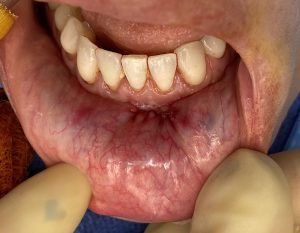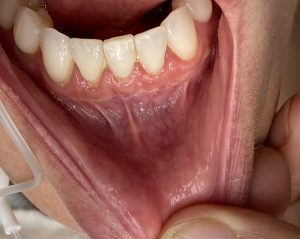For many cases of chin pas ptosis intraoral technique are used and can be effective. Such techniques rely on a method to secure the mobilized chin pad upward and to hold in there for a prolonged time as it heals…and hopefully stays there. The most common techniques used is securing the chin pad to screws placed into the bone at about the level of the labiomental sulcus. The most effective technique, in my opinion, are interosseous holes placed between the incisor tooth where the suture can be passed through and the knot placed on the lingual side of the mandibular symphysis. It would be impossible to get a higher or more secure superior form of fixation than with this technique.
But the interosseous bicortical chin pad suspension technique has its technical challenges and some patientsmay not find it appealing to go through their tooth roots particularly if they have any evidence of periodontal disease/gingival recession. Even if they were the limitation of this technique is that the long-term stability of the result depends on a suture holding in place. Ideally what you want is the chin pad itself to rigidly adhere to bone below the level of the labiomental fold.


Unlike high suture fixation the Medpor sheet is designed to give the ptotic soft tissue chin pad a surface on which to adhere. Given the vigorous soft tissue adhesion that Medpor material creates this provides a good fixation for the inferior soft tissue chin pad.
Dr. Barry Eppley
World-Renowned Plastic Surgeon




